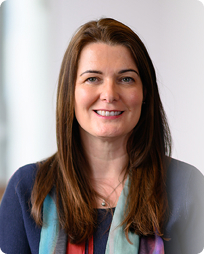A founding participant of the RCUK funded Researcher in Residence initiative, Digital Catapult has hosted 19 researchers from 17 universities.
Taking a residency at Digital Catapult has helped these researchers make new industry connections that have informed and evolved their research, helping it make a greater impact on the development and adoption of digital technology.
How can we increase the value from research into leading-edge digital technologies?
Many of the startups that Digital Catapult works with have their roots in academia. Accelerating the adoption of technology research, from universities to companies, is a key mission for the Catapult Network.
With some of the world’s leading academic institutions within its shores, the UK has an opportunity to gain ever greater global competitive advantage from its research capabilities if we can find ways to speed up the impact of research into industry.
Digital Catapult wants to achieve this in three key ways:
- exploring commercial opportunities arising from research,
- developing new products, services and processes by co-creating new ideas
- making research outputs more accessible to a commercial audience to increase the real-world impact of findings
Researcher in Residence is a programme that accelerates adoption of EPSRC funded research
Researchers in Residence was launched in 2015 as an Engineering and Physical Sciences Research Council (EPSRC) Digital Economy Theme initiative. The aim of this programme was to accelerate the adoption of its research by industry in partnership with Digital Catapult. It was subsequently extended to include UKRI, which brings together the seven research councils, Innovate UK and Research England as a whole and other catapults from the Catapult Network.
Via an open call process researchers applied to participate. Digital Catapult worked with universities to select the best research proposals based on predefined programme criteria.
The residencies were designed to be flexible to make the opportunity accessible regardless of where an individual was based, researchers could work full-time for shorter periods or part-time for a longer period of up to two years. Researchers were expected to spend at least half the time allocated at Digital Catapult centres, attend at least three Digital Catapult events, and produce a final report at the end of the residency.
Researchers could choose to spend their time either exclusively working with Digital Catapult or also with others in the Catapult Network, (options included High Value Manufacturing, Transport Systems Catapult, Future Cities Catapult and Satellite Applications Catapult).
During their participation in the programme, researchers received commercial and technical expertise from their host catapult and had access to Digital Catapult’s wide network of industry and technical contacts.
Awards for researchers up to the value of £50k were available as part of the programme to support this valuable work. This funding compensated the researcher’s host university for the time they spend conducting the residency.
The programme aims to benefit the researchers too
For the researchers, participating in the programme increases the potential impact of their work by connecting them more directly with industry. Expertise and guidance from the Digital Catapult team helped them to navigate industry and develop work that will support commercial innovation.
Being part of the Digital Catapult also exposed them to a wider ecosystem of technical and industry experts which shaped and developed their work in new directions. They also had the opportunity to connect with other researchers.
The RiR programme has resulted in new products, services and a wealth of opportunities for the researchers themselves
Since its creation, 19 researchers from 17 universities have participated in the RiR programme. So far the impact of the research has been documented in 20 publications (blogs, articles, books and white papers), one proof of concept, three open source products.
Having access to Digital Catapult’s extensive networks of industry, academic, technology, government, funding and investment stakeholders has also led to ongoing relationships and opportunities such as consultancy contracts, fellowship and funding.
Four of the researchers who have participated are Deepayan Bhowmik, Hetty Blades, Paolo Missier and Simon Parkinson.
Deepayan Bhowmik’s research may influence JPEG standard and his collaboration with Hetty Blades could have commercial VR/AR application
Deepayan Bhowmik, now at the University of Stirling but at the time at Sheffield Hallam, took his work in advanced tamper-proof image watermarking into new directions in interactions with the blockchain team at Digital Catapult. The resulting line of work, that is of great interest commercially, has led to multiple publications and events as well as discussions around inclusion in a JPEG standard. In the same cohort, Hetty Blades of Coventry University was working on ownership and copyright of dance performances and movement data online.
The programme resulted in a new collaboration between Blades and Bhowmik to explore blockchain-based watermarking for human movement data, that could have commercial applicability for motion and volumetric video capture studios capturing content for VR and AR, games and video. Digital Catapult and Bhowmik are continuing to work together with further grant applications in progress.
Paolo Missier’s research informs Synchronicity R&D
Paolo Missier at the University of Newcastle, working on a new generation of marketplaces for IoT data using smart contracts and blockchain, integrated very closely with the IoT team at Digital Catapult. The collaboration has led to the increased transfer of knowledge and skills in both directions. As a result of this collaboration, Digital Catapult has developed a considerably more advanced set of software and tools, as part of the Synchronicity European collaborative R&D project which has broader commercial applicability in digital manufacturing. The results of all Missier’s research is available open source in the GitHub repository. Since the end of the residency, Paolo has continued to develop this area of research by setting up a new research team in Newcastle that includes undergraduate and Masters projects and now a new PhD topic, as well as multiple publications, co-authored between the University of Newcastle and Digital Catapult. Digital Catapult and Missier are continuing to work together as he starts his new fellowship at the Alan Turing Institute.
Simon Parkinson’s residency leads to the creation of open source application that detects privilege creep
Simon Parkinson, from the University of Huddersfield, developed a software application named ‘Creeper’ to detect “privilege creep”. “Privilege creep” happens when employees acquire successive privileges to file systems and software and those privileges are not kept up to date as the employees move job. This may put the company at risk for example through malware and ransomware being unwittingly installed. Creeper is available as open source and is available for anyone to use/develop it further for free use within the public domain.
Get ready for Tranche 2 Launch Event for the Researchers in Residence scheme in Belfast
Digital Catapult, the Innovation Launchpad Network+ and UK Research and Innovation are pleased to invite academics to a hybrid launch event on Thursday 20th April 2023, taking place at Belfast’s Ormeau Baths from 11 am to 1:30 pm.
Jacinthe Nourrit, the Digital Catapult’s Senior Policy Research Manager, added: “We received high-quality applications for the first tranche of the RiR scheme and we are looking forward to receiving new Expressions of Interest for tranche 2 very soon. The event in Belfast will be a fantastic opportunity to welcome academics into our Network.”
Brendan Lowry, Senior Innovation Partner at Digital Catapult added: “The RiR scheme is a fantastic opportunity for academia and researchers to work alongside the Catapults, I look forward to welcoming academics from the region to our network.” Find more information here.















































